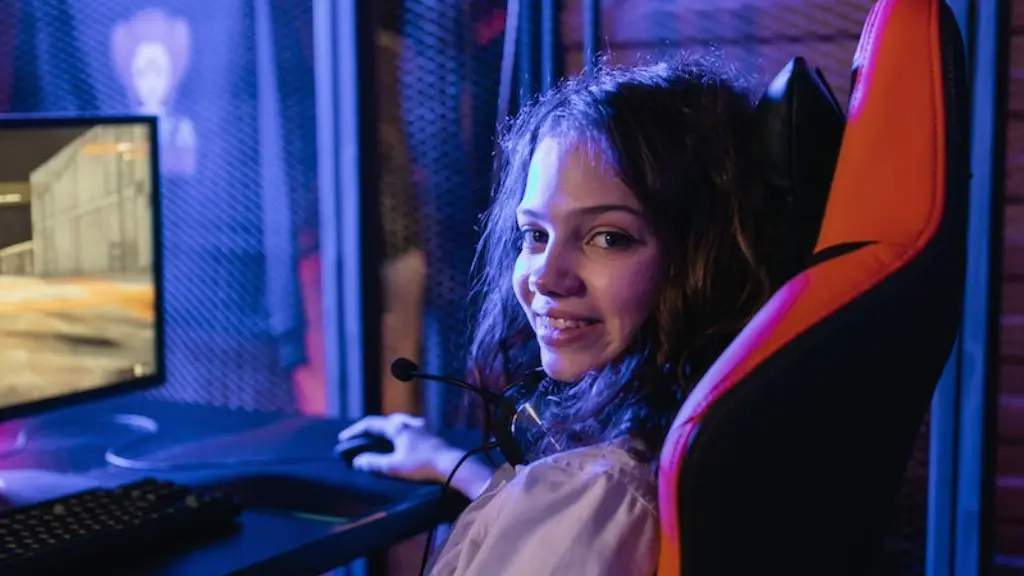For serious gamers, when it comes to optimizing their gaming setup, response time is one of the most important metrics. Response time is a measure of the time it takes for an image to be displayed on a gaming monitor after being sent from the graphics card. The best response time for gaming monitors is usually around 1 to 5 milliseconds. This responds to the speed and accuracy of gaming. While response time is important, other specs such as refresh rate, resolution and panel type are also important elements to consider before making a purchase.
When determining the best response time for gaming, it’s important to consider the type of gaming and how competitive the gamers are. For casual gamers who play for fun, smoother action and reduced ghosting are more important. As such, having a response time of at least 4ms is a good start. If a gamer is looking for competitive play and want the highest frame rate possible, then getting a gaming monitor with a response time of 1-2ms could be a better choice.
Another element to consider when thinking about the best response time for gaming is the refresh rate of the display. A response time of 1ms is great but can lead to tearing if the refresh rate is too low. If the monitor’s refresh rate is too low, then even the best response time won’t have the desired effect so it’s important to know the refresh rate before deciding which gaming monitor is best. Refresh rate of around 144 hertz or above is good for gaming.
When it comes to response time and gaming, it’s also important to consider what panel type is used with the gaming monitor. Different panel types have different response times, so it’s important to consider which type is best for the user’s gaming needs. TN panels are the fastest type of monitor when it comes to response times, usually boasting up to a 1ms response time and a refresh rate of up to 144 hertz. However, TN panels are not the best when it comes to image quality and viewing angles.
VA panels and IPS panels offer better image quality but come with longer response times. VA panels usually come in at around 4-6ms response times, while IPS panels can go as low as 3.5ms but usually stick around 4ms to 6 ms. IPS panels usually offer better color accuracy and viewing angles, so they’re better for more serious gamers who are looking for the best display quality.
Overall, the best response time for gaming monitors depends on the type of gaming and the type of panel used. For casual gamers it’s best to stick with at least 4ms response time while more competitive gamers can look for monitors with 1-2ms response time. It’s important to consider the refresh rate of the monitor as well as the panel type to make sure the monitor is best suited for the user’s needs.
TN vs IPS vs VA Panels For Gaming
When considering the best response time for gaming monitors, it’s important to consider the type of panel used. TN panels are the fastest when it comes to response times, usually boasting up to a 1ms response time and a refresh rate of up to 144 hertz. However, TN panels are not the best when it comes to image quality and viewing angles. VA panels usually come in at around 4-6ms response times, while IPS panels can go as low as 3.5ms but usually stick around 4ms to 6 ms.
IPS panels usually offer better color accuracy and viewing angles, so they’re better for more serious gamers who are looking for the best display quality. TN panels are the fastest type of monitor when it comes to response times, but they have lower picture quality and limited viewing angles. VA panels are a good compromise between TN and IPS panels, with decent picture quality and mid-range response times of around 4-6ms.
The choice between TN, VA and IPS panels ultimately comes down to the user’s preference and gaming needs. TN panels are best for gamers looking for the highest frame rate with the least ghosting; VA panels offer a good compromise between speed and image quality, while IPS panels provide the best image quality but come with slower response times. It’s important to consider all three panel types before making a purchase to determine which one is the best fit.
120 vs 144 vs 240 Hz For Gaming
In addition to the type of panel used, refresh rate is also an essential element to consider when determining the best response time for gaming. A higher refresh rate means that the monitor can update its image faster, resulting in smoother visuals. While a response time of 1ms is great, it’s important to make sure the refresh rate is able to keep up with the response time. For example, a monitor with a response time of 1ms can lead to tearing if the refresh rate is too low.
Most gaming monitors nowadays come in either 120 hertz, 144 hertz, or even 240 hertz. 120 hertz is good for gaming but won’t provide the smoothest visuals. 144 hertz is a better choice since it can keep up with response times of 1ms and provide a more fluid gaming experience. 240 hertz is the highest available refresh rate and provides the most smooth visuals, but is not necessary for most gamers.
120 hertz is fine for casual gamers who play for fun, but serious gamers looking to get the most out of their gaming setup should opt for a gaming monitor with a refresh rate of at least 144 hertz. This refresh rate can keep up with response times of 1ms, eliminating tearing and giving gamers the most smooth gaming experience possible.
G-Sync and FreeSync For Gaming
G-Sync and FreeSync are technologies used to reduce tearing and stuttering when gaming. G-Sync is a technology developed by NVIDIA and is only available for monitors that support the G-Sync technology. FreeSync is a similar technology but was developed by AMD and supports monitors from multiple manufacturers. Both technologies work to prevent screen tearing by synchronizing the refresh rate of the monitor to the frame rate of the graphics card.
G-Sync monitors are more expensive than FreeSync monitors but offer smoother visuals and a better gaming experience. FreeSync monitors are more affordable but may have occasional issues, such as blank frames. It’s important to consider which one is best for the user’s needs and budget. Both G-Sync and FreeSync are great technologies for gamers who want the best gaming experience and reduced screen tearing.
In conclusion, when it comes to optimizing a gaming setup, response time is an important metric to consider. The best response time for gaming monitors is usually around 1 to 5 milliseconds. When determining the best response time for gaming, it’s important to consider the type of gaming, the refresh rate of the display, and the panel type used with the gaming monitor. G-Sync and FreeSync are two technologies that can help reduce screen tearing when gaming. Ultimately, the choice of which gaming monitor is best for the user’s needs and budget.

